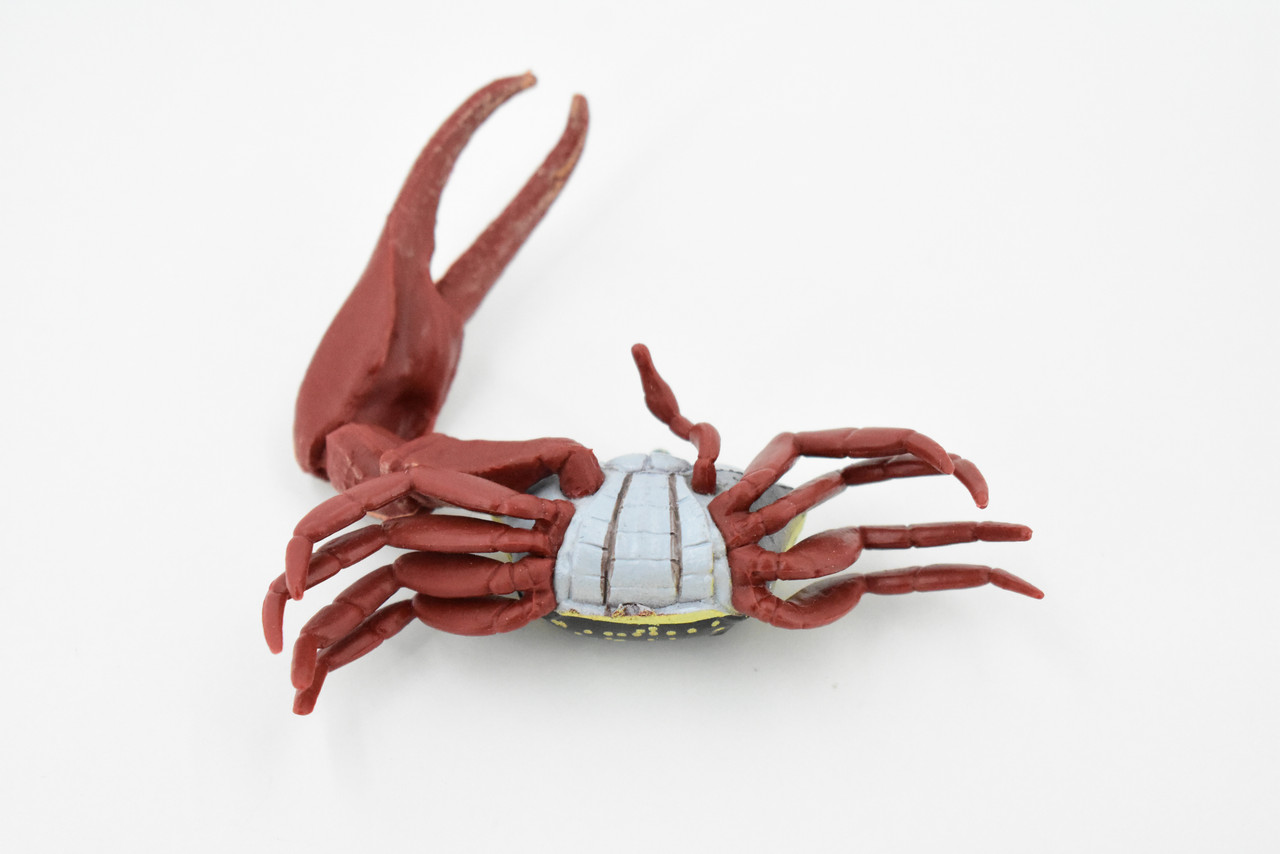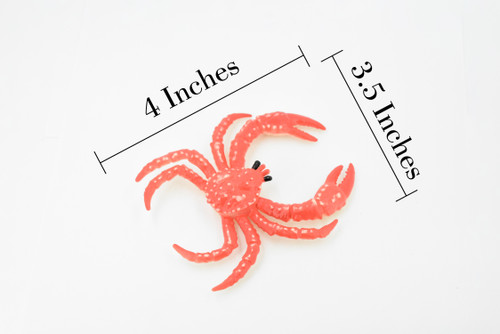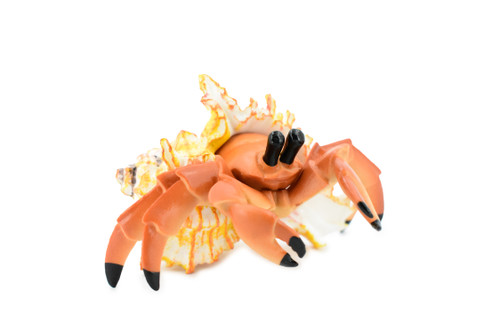Product Description
Fiddler crabs can be found from the Gulf of Mexico to South America. Fiddler crabs are most often found in soft sand or mud near or around the edges of shallow salt marshes. Fiddler crabs are the most common crab in a salt marsh and they play an important role in the salt marsh community. They eat detritus (dead or decomposing plant and animal matter) and are themselves food for a number of wetland animals. In Spanish, the fiddler crab is called a cangrejo violinista, which literally translates to "violinist crab". Fiddler crabs help preserve our important coastal wetland ecosystems. By burrowing deep into the mud of the marshes, the crabs create a maze of tunnels that aerate (add oxygen to) the marsh grasses and underwater seagrass meadows.
The fiddler crab's carapace (shell) length is 1 to 2 inches (2.5 to 5 cm). It is dark during the day; turning a lighter color at night. Males have one large claw and one small claw. Females' claws are the same size. Fiddler crabs move sideways rather than forward or backward.
Fiddlers have a remarkable mating ritual: male fiddlers line up beside the tidy burrows they have dug and move their chelipeds (large claws) back and forth in a fiddling motion to attract females. Females, fresh from foraging, will walk past and if a male catches a female's eye, he will tap the ground with his claw. If she is still receptive to his advances, she will enter his burrow. They mate inside the burrow and she emerges two weeks later to release her sponge (fertilized eggs) into the water.
The burrows provide privacy for mating, sleeping and "hibernating" during the winter months. Fiddlers also burrow into the sand to escape from predators and abandon their temporary burrow once the danger has passed. During high tide, fiddler crabs pack sand into the entrance to their burrows and wait until the tides goes down again. Sand or mud pellets "sprinkled" around the opening of a crab burrow means that a crab lives there.
Fiddler crabs reabsorb their shells rather than shedding them as they grow. Fiddlers use their claws to pick up sediment and scrape food particles into their mouths. The males can only use their single small claw for feeding so they have to work twice a hard as the females do to get the same nutrients. If one claw is lost, the fiddler crab will soon regenerate (regrow) a new one. In the meantime, the remaining claw will grow bigger. These crabs are seen year-round in Texas salt marshes and are always moving sideways.
Collectible Wildlife Gifts is the market leader in providing high quality, realistic toys of all types! Every one of our items is heavily inspected for quality craftsmanship and authenticity. Our products make great gifts for your family and friends! Additionally, our lifelike animal figurines and plush make for great displays and educational sets. We are happy to serve our wide range of clientele from parents to educators, gift shop owners and many more!
Our team works hard to ensure you get a great toy. All products from CWG are checked for quality to ensure you receive the order in perfect condition.
From plush sharks to educational animal growths cycle we offer the perfect toy or gift for any occasion. Our products have been ordered by educational groups, aquariums, zoos, and more.
Great customer service is guaranteed when you order from Collectible Wildlife Gifts, we want you to love your toy and have a simple ordering process, we are happy to assist with inquiries!

























